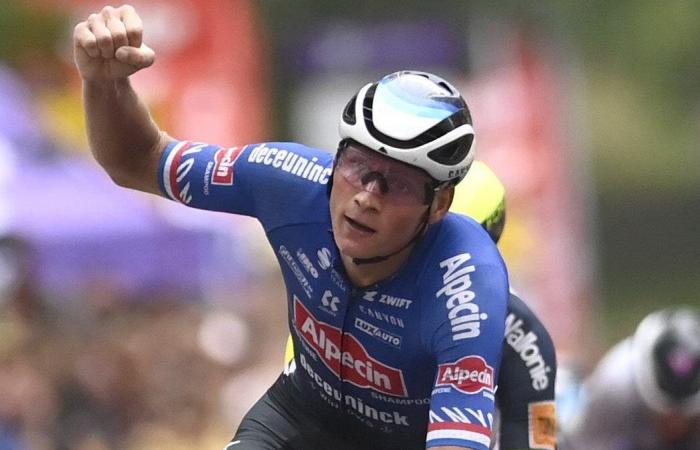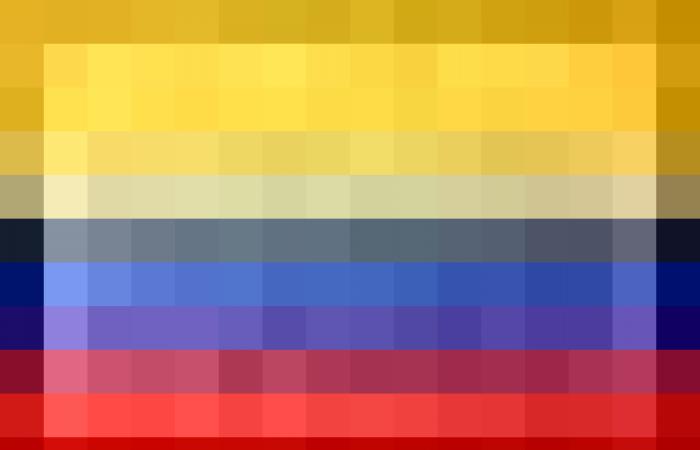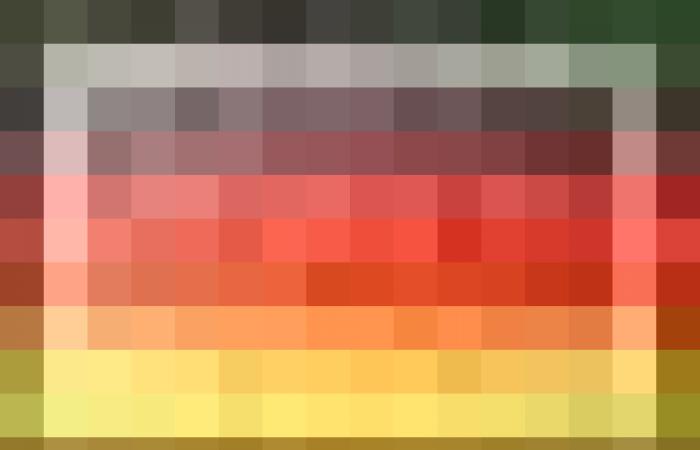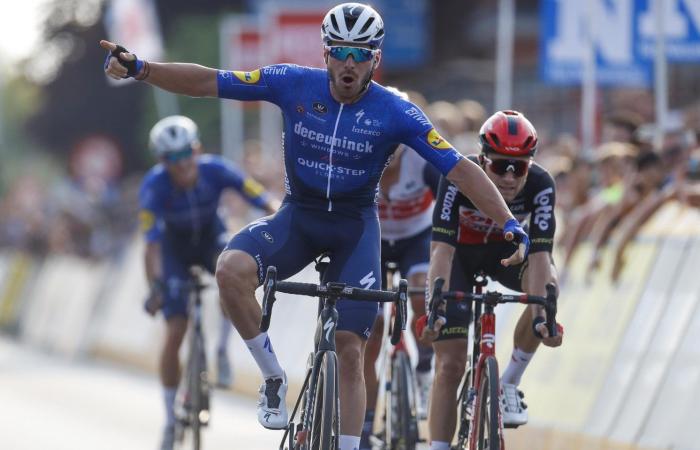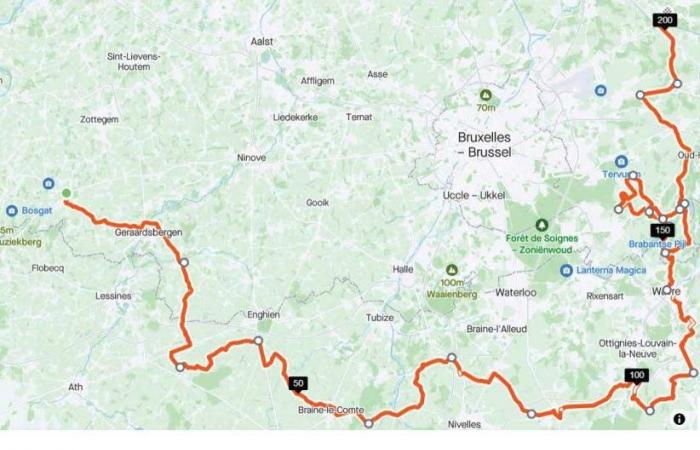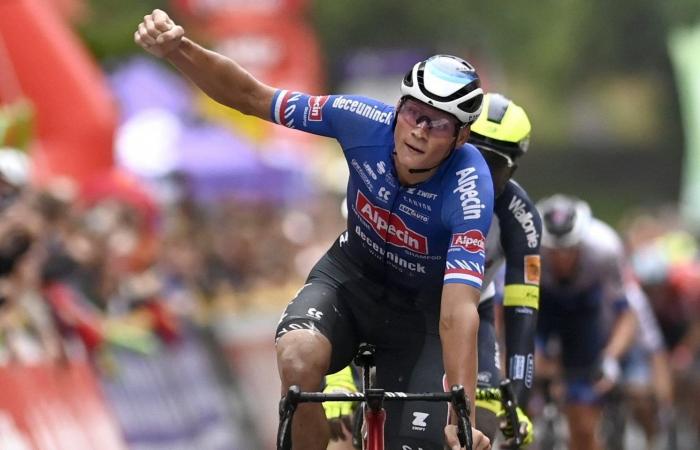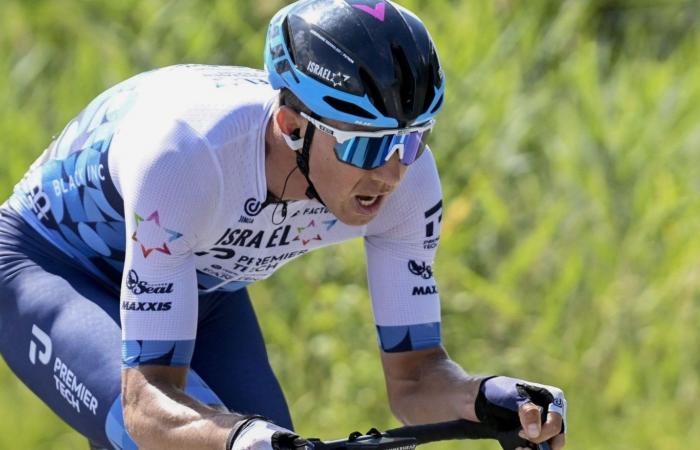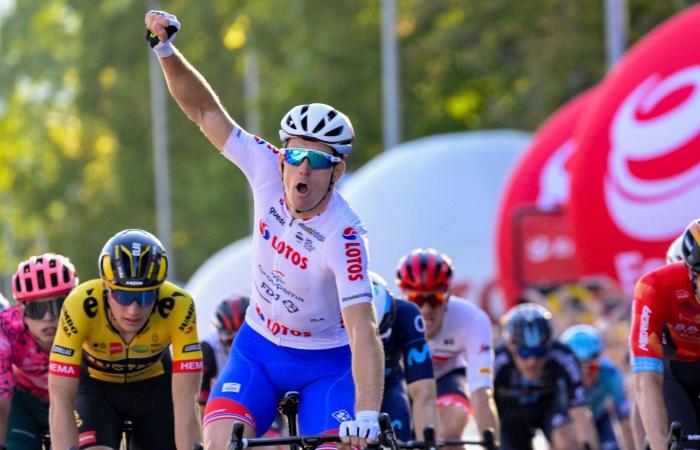Those who are homesick for last year’s world championship on the road in Leuven will already start salivating when they see the route of the Primus Classic. The center of gravity of this 1.Pro race lies on the Moskesstraat, Smeysberg and Bekestraat, which we still know from the Flandrien loop. Will Mathieu van der Poel conclude his ultimate preparation for the World Cup with a victory on Saturday? CyclingFlash looks ahead.
History
The Primus Classic as we know it in its current form has been on the calendar since 2011. But the history of this one-day price actually goes back a little further. Initially, this race was intended as a tribute to ex-rider Raymond Impanis, who won Gent-Wevelgem, the Waalse Pijl, Ronde van Vlaanderen and Paris-Roubaix in the 1950s. The name GP Raymond Impanis was therefore a logical consequence: the race mainly took place in his native region of Kampenhout.
Willem Peeters was crowned the first winner of the GP Impanis in 1982. Later on, some nice names would be added with Jelle Nijdam, Allan Peiper, Eric Vanderaerden and Phil Anderson. But this competition never really got off the ground, so she was removed from 1994 for a period of almost twenty years.
From 2011, the race was revived by linking the tribute of Raymond Impanis to that of another icon: Peter Van Petegem. We know him from his double victory in the Tour of Flanders in 1999 and 2003 and in that last year also Paris-Roubaix. In addition, Van Petegem is the record holder in Omloop Het Nieuwsblad with three victories. Certainly not an unworthy name to put next to Impanis, then. The GP Impanis-Van Petegem was born.
Peter Van Petegem – photo: Marcel Koch
In 2011, it was still a 1.2 race, with Sander Cordeel as the winner. But it wasn’t until the race got a professional status in 2012 that the train really left. André Greipel, Sep Vanmarcke and Greg Van Avermaet were immediately sounding names on the honors list. This increased the ambitions and in 2015 resulted in an upgrade and a new name change. Henceforth, this race was known as the Primus Classic, under a 1.Pro status.
Last ten winners Primus Classic
2021: Florian Senechal
2020: Not run due to the corona crisis
2019: ![]() Edward Theuns
Edward Theuns
2018: ![]() Taco van der Hoorn
Taco van der Hoorn
2017: ![]() Matteo Trentin
Matteo Trentin
2016: ![]() Fernando Gaviria
Fernando Gaviria
2015: ![]() Sean De Bie
Sean De Bie
2014: ![]() Greg Van Avermaet
Greg Van Avermaet
2013: ![]() Sep Vanmarcke
Sep Vanmarcke
2012: ![]() André Greipel
André Greipel
Last year
There was no question of an early flight that long colored the course of the race. What’s more, not a single breakaway group got a nice lead and the favorites started early. At 43 kilometers from the end it was Mathieu van der Poel who shot his first arrow.
Only Julian Alaphilippe could follow him, but the world champion shook his head when the Alpecin-Fenix leader asked to take over with an arm movement. With five teammates in the group behind it, it was tactically not smart to start a duel now. But for Van der Poel that was no reason to immediately give in. On the contrary.
Thanks to Van der Poel’s beech work, a leading group of thirty riders was formed at forty kilometers from the end, many of whom were colored blue. Deceuninck-Quick-Step was represented by six riders, including world champion Alaphilippe. Every attack that followed was either initiated by Patrick Lefevere’s men or countered by them.

Photo: Cor Vos
A leading group of eleven men, including five (!) Deceuninck-Quick-Step riders, were the first to pass the sign for the last 25 kilometers. In addition to Ballerini, Alaphilippe, Senechal, Honoré and Stybar, Van der Poel, Nizzolo, Van der Sande, Stuyven, Clarke and Aleotti were part of the group. In the run-up to the Hulstbergstraat, the last slope of the day, Van der Poel was hit by bad luck. After a flat front tire he wouldn’t get in the front anymore.
On the Hulstbergstraat, another selection was made at the front. Stuyven, Van der Sande, Clarke, Honoré and Sénéchal turned out to have the best legs and stayed away as five. In the following kilometres, they gathered a lead of just under a minute.
At 6.5 kilometers it was Honore who jumped away first. His attack was met with difficulty by Clarke. After being taken back, Senechal cleverly played the team game by attacking in turn. This attempt was not the final one either. In the final kilometers the battle of the pendulum continued to attack, but no one got away. Honoré decided to sacrifice himself for his teammate. The Dane started the sprint which was then easily won by the Frenchman Sénéchal.
Result Primus Classic 2021
1. ![]() Florian Senechal (Deceuninck-Quick-Step)
Florian Senechal (Deceuninck-Quick-Step)
2. ![]() Tosh Van der Sande (Lotto Soudal) all in zt
Tosh Van der Sande (Lotto Soudal) all in zt
3. ![]() Jasper Stuyven (Trek-Segafredo)
Jasper Stuyven (Trek-Segafredo)
4. ![]() Mikkel Honoré (Deceuninck – Quick-Step)
Mikkel Honoré (Deceuninck – Quick-Step)
5. ![]() Simon Clarke (Qhubeka-NextHash) on 4s
Simon Clarke (Qhubeka-NextHash) on 4s
trail
The Market Square of Brakel has been the permanent starting place of the Primus Classic since the revival of this competition, and that is no coincidence. The name bearer of the race, Peter Van Petegem, comes from the East Flemish municipality. The riders will leave there for a journey of 199.3 kilometers, which is heavily spiced along the way by no fewer than eighteen slopes.
The first 120 kilometers are relatively easy. The route then mainly goes through the provinces of Hainaut and Walloon Brabant, with the riders already encountering the first eight slopes. However, they are often far apart and they are not the most difficult slopes of the day.
It is only when the language barrier is crossed again that the real work begins. Then the riders will end up on the roads of the world championship on last year’s road, more specifically on the Flandrienlus.

Nine climbs suddenly appear in a time span of 40 kilometers, including twice the well-known, but feared Mosque Street (500 meters of cobblestones at 7.2%) and Smeysberg (600 meters at 7.9%). Also the Bekestraat (400 meters of cobblestones at 7.6%) and the ones not included in the World Cup loop Holstheide (800 meters at 5.9%) are central here.
After Smeysberg’s last time at about 30 kilometers from the finish, the course flattens out more. Only the Hulstbergstraat is still waiting for the riders, before it goes in a slightly descending line via Bertem, Kortenberg, Kampenhout and Boortmeerbeek to Haacht. The last five kilometers are characterized by seven sharp bends, with the last exit at 800 meters. From there it is a straight, very slightly ascending line to the finish.
Slopes Primus Classic:
Another 192 km: Zonnebloemstraat
Another 172 km: Rue de Saint-Marcoult
Another 141.5 km: Rue de Nivelles
Another 133 km: Rue de Haut-Ittre
Another 107 km: Rue de Noirhat
94.5 km to go: Rue de Corbais
Another 87 km: Chemin du Relais (cobblestones)
Another 78 km: Chaussée d’Ottenbourg
Another 72 km: Moskesstraat (cobblestones)
Another 69.5 km: Holstheide
Another 66 km: Smeysberg
Another 57 km: Florivalstraat
Another 51 km: Moskesstraat (cobblestones)
Another 49 km: Holstheide
Another 41 km: Bekestraat (cobblestones)
Another 39 km: Horenberg
Another 30.5 km: Smeysberg
Another 17 km: Hulstbergstraat
Saturday 17 September 2022, Primus Classic: Brakel – Haacht (199.3 km)
Start: 12.45 pm
Finish: between 5.20 pm and 5.55 pm
Favorites
The Primus Classic is on the road in Australia just a week before the World Cup, which tempts favorites such as Mathieu van der Poel and Alexander Kristoff to take a last competition stimulus on Flemish soil. In total, thirteen of the eighteen WorldTeams are present, supplemented by six ProTeams and three continental teams.
Anyone who saw the final kilometers of the Grand Prix of Wallonia on Wednesday will agree with us: we don’t have to look long for a top favourite. Mathieu van der Poel finished the 1.Pro course playfully, went with Jasper Philipsen in the wheel Dylan Teuns himself back, and then the rest just sprinted out of the wheel. He is certainly ready for the World Championship on the road, but also for this Primus Classic. Does Van der Poel regard the Moskesstraat as a final test? Or is the intrinsically faster Philipsen allowed to indulge in a sprint?

Van der Poel trumped everyone in Wallonia – photo: Cor Vos
Arnaud De Lie is the outspoken leader of Lotto Soudal when it comes to a sprint, but actually the entire team should be able to handle this terrain. Victor Campenaerts won the hilly Tour of Leuven for a reason, and Philippe Gilbert, Jasper De Buyst and Florian Vermeersch are also riding strong. The Walloon leader showed his climbing legs recently in the Grand Prix of Plouay, where he survived the selection but came up short in the sprint.
Intermarché-Wanty-Gobert-leader Alexander Kristof have yet to travel to Australia. The fact that he still wants to start here means that the Norwegian struggles with a lot of race sense and motivation. The former European champion also showed in the Circuit de Wallonie that – despite his large palmares – he does not feel too good to give the best of himself in races like this one. Moreover, after a tough race, he is always one of the fastest in a thinned out group.
Kristoff’s teammate Taco van der Hoorn – always dangerous in an early or late flight – is ex-winner by the way, just like Greg Van Avermaet (AG2R Citroën) and Sep Vanmarcke (Israel-Premier Tech). And especially the latter is gradually getting into shape. De Kortrijkzaan won the Maryland Cycling Classic after a difficult final for a reason. Saving his team from relegation from the WorldTour will be difficult, but fighting for a nice victory here? Just write Sep for that.

Does Sep Vanmarcke have anything else to offer? – photo: Cor Vos
Always dangerous in your own country: Dries Van Gestel. Where Peter Sagan and Anthony Turgis were looked at at TotalEnergies this spring, it was mainly Van Gestel who drove into the spotlight. To top it all off, he put the Ronde van Drenthe on his palmares. Van Gestel is not the fastest in a small group, but the fact that he is not the biggest name might give him some extra space.
In addition to these classic types, in which we also count guys like Stan Dewulf and Oliver Naesen (AG2R Citroën), Piet Allegaert (Cofidis) and John Degenkolb (Team DSM), there are also a number of fast men at the start. The only question then is whether they can survive the Moskesstraat zone. For Fabio Jakobsen (Quick-Step-Alpha Vinyl) and Dylan Groenewegen (BikeExchange-Jayco) that can be a very difficult job.
Arnaud Demare on the other hand, loves this terrain. He was only too happy to show that in the Druivenkoers, in which the Moskesstraat also played an important role in the final. Only compatriot Matis Louvel could not follow the Frenchman from Groupama-FDJ, so you can expect him in the final of the Primus Classic. The same applies to Bryan Coquard, the fast man from Cofidis. Coquard purposely stepped out of the Vuelta early to be fresh in races like this one.

Arnaud Démare is in top form – photo: Cor Vos
Thanks to a stage win in the Tour of Britain, Jordi Meeus (BORA-hansgrohe) with a lot of confidence at the start, although teammate Marco Haller can also handle this terrain. After the BEMER Cyclassics, we will never forget the latter in our favorites list. Alex Aranburu is Movistar’s high-climbing sprinter, while Trek-Segafredo outplays ex-winner Edward Theuns. Bingoal Pauwels Sauces WB delivers outsider Milan Menten.
Favorites according to WielerFlits:
Website organization
Participant list
Weather and TV
The riders can expect a wet and cold Primus Classic on Saturday. There is a 90% chance of precipitation throughout the day, with about 6.5 mm falling according to Meteovista. Temperatures do not exceed 14 degrees Celsius and the wind blows from the northwest at 4 Beaufort.
Dutch viewers must join Eurosport are, in particular on the Eurosport Player from 3 p.m. After all, the Tour of Slovakia is preferred on television. Flemish viewers can visit from the same time on VTM.
Take Our Poll
Tags: Preview Primus Classic CyclingFlash

